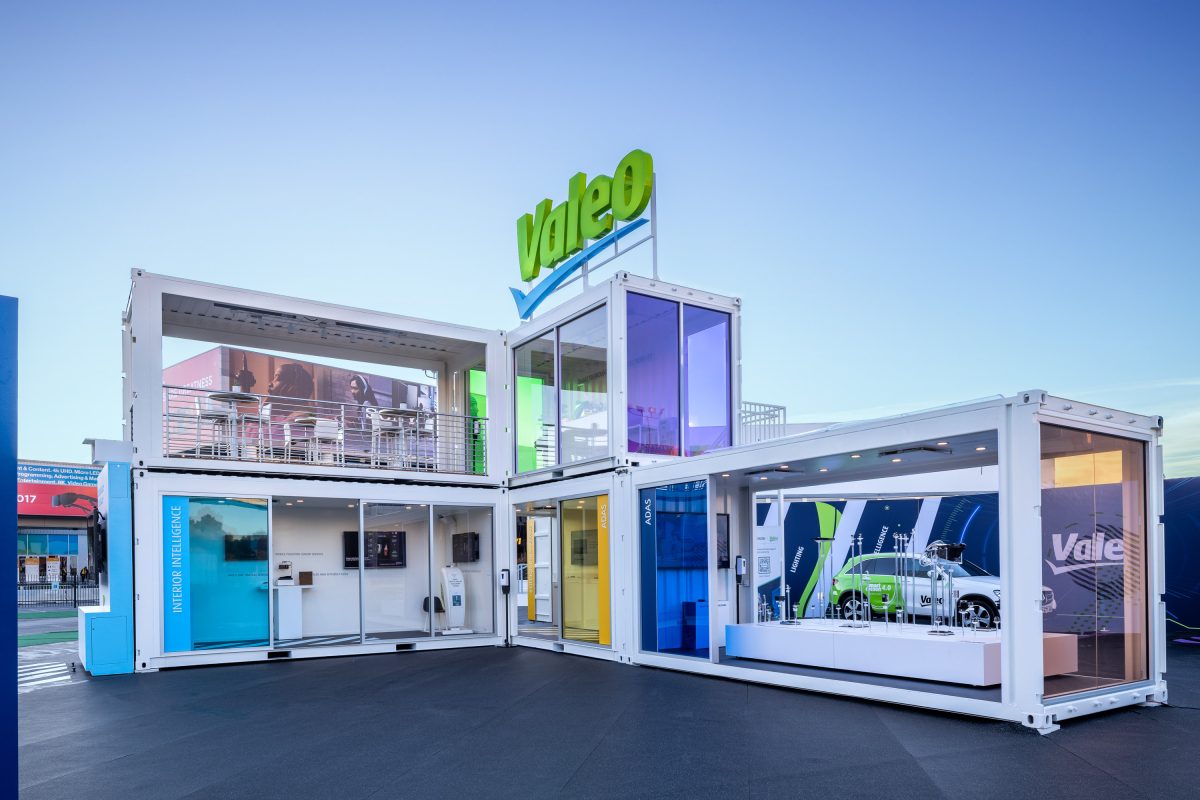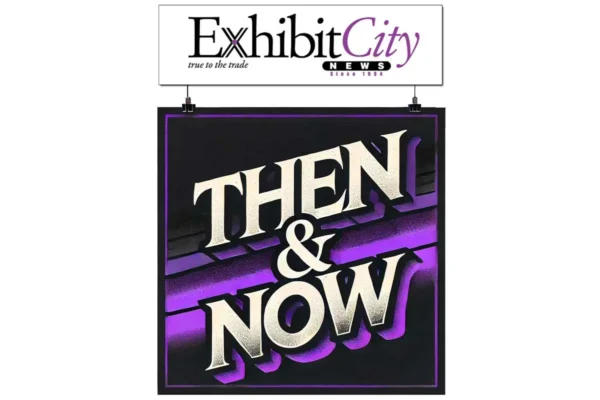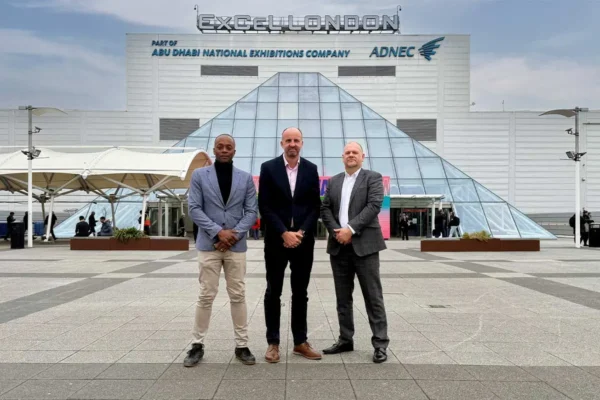Read in the digital print issue HERE .
With the exponential growth of the tradeshow industry in recent decades, sustainability has been an ongoing concern. Construction creates the largest resource waste, and the tradeshow industry is adjacent to construction. But more and more companies are creating with sustainability in mind, and ECN’s Editor Li Jackson sat down with one of the most sustainable companies, California-based IPME, to discuss their unique place in the exhibit industry.
Using shipping containers and modular equipment as building blocks, IPME custom-designs and fabricates permanent and temporary shipping container structures. These structures are used to create shipping container malls, schools, restaurants, bars, office spaces, and mobile marketing event structures.
Co Owner and CEO Bill Hinchliff says, “We started IPME because we wanted to do some really big things and build upon what I had started at ConGlobal. Craig (Rapoza) owns a company that does fabrication, and we were able to build that very first drop-down wall; we sold that project to Hurley, and it evolved into building a fleet of pre-engineered assets that are ready to go, ready to be rebranded, finished and sent out, quickly and efficiently.” Hinchliff declares, “It’s fast, cost-effective, flexible, and creative. And more importantly – sustainable.”
“Our systems are prefabricated and modular, so all of the work is done in a controlled environment, and then we deliver onsite,” explains Co owner and COO Craig Rapoza. “To set a ground floor, I pull the truck up (to a venue), and in 15 minutes, I have the floor … for a second story, same thing, and in 15 minutes, it’s up. Then I build the stair system in 45 minutes. We add from there, and only using 2 employees.”
IPME has 12 employees on staff and then outsources out with production houses and fabrication teams.
“So for us, we are creating a prefab, two-story system that we wind up not needing a ton of resources for.” Rapoza illustrates: “On associated costs, we are a fraction. To get a footprint of 2 stories (for a conventional activation), you might need 20-100 people and forklift movements from the loading dock. You will need multiple days to build out scaffolding. Whereas we are one truck – that carbon footprint, my labor, and our drayage are a fraction of that cost. So our carbon footprint is a fraction, and our landfill impact is almost non-existent.”
Rapoza stresses: “These assets are recycled assets; we are considered the most sustainable because we create a negative carbon footprint from something that was recycled, reused, and repurposed from another event.”
What is IPME’s plan for the future? Hinchliff states, “How we plan to grow and scale is to creatively combine our container assets with more conventional style tradeshow products like beMatrix and Alluvision to create the ultimate hybrid solution.”
“Our ultimate goal is to stretch the boundaries of the container,” Rapoza adds, “we’ve got a project for CES that will really blow minds on what we’re doing with the container.” Hinchliff also points out numerous benefits to the container exhibit in outside use, with obvious uses like climate control, but also advantages when unexpected weather events occur. One recent event for Firestone saw massive amounts of wind and rain. While tents were being blown away, “Everybody was sheltering in our containers,” Hinchliff says with pride.
But IPME wants all in on proliferating sustainability in the industry, “We are looking at being part of those organizations that are writing the book on sustainable process and procedure,” says Rapoza. “So that we are doing the right thing and not just spinning our wheels.”
In addition to IPME’s EDPA involvement, including the EDPA’s first-ever hockey tournament in Las Vegas (see ECN’s coverage), there’s also the EDPA’s Huntington Beach Golf event. Finally, for Hinchliff, it is important to note that IPME is not “just the container company.” The container is just the start of what they do: “The container gets us in the door, but we can build you anything.”I’ve made some adjustments to improve clarity and readability. If you have any further questions or need additional revisions, please feel free to ask!
About IPME
The International Port Management Enterprise is an industry leader in designing, engineering, and manufacturing shipping containers and modular equipment. We rent and sell our inventory of modular shipping containers to clients in North America as well as the international marketplace.
Using shipping containers and modular equipment as building blocks, IPME custom-designs and fabricates permanent and temporary shipping container structures. These structures are used to create shipping container malls, schools, restaurants, bars, office spaces, and mobile marketing event structures. We can also create the ultimate shipping container pop-up event space or portable experiential exhibit as well as water filtration, dredge, fire, and military training shipping containers.
Our modular shipping container structures are completely customizable and can be branded to provide a turnkey solution for any marketing function, event, festival, tradeshow, or venue. We can create pop-up retail, concession, and event hospitality structures. Our in-house project management, production, and activation times are second to none. We pride ourselves on providing the highest quality product, meeting budgets ahead of schedule, and providing a green product that’s built to last. Further, these structures are built 30% faster than standard construction builds.































